18. Memories of Murder (Bong Joon-ho, 2003, S.Korea)
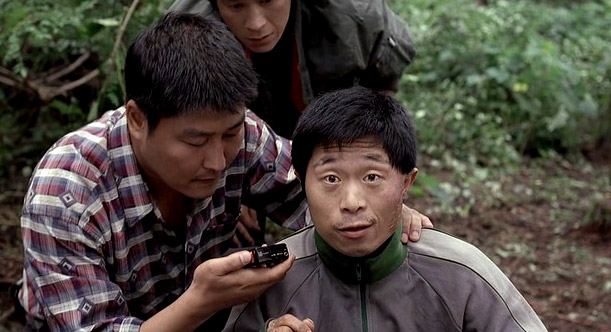
Based on the true story of the first serial killer ever to appear in South Korea, the film begins in October 1986, when the deceased body of a raped woman is discovered in a ditch next to a field. A little later, another similar body is discovered. Two local detectives, Park Doo-man and Cho Yong-koo, are responsible for the investigation but are obviously out of their depth, as is the whole police department since the events are unprecedented in the area.
Detective Seo Tae-yoon arrives from Seoul to assist in the case, and proceeds to quash the claims of the aforementioned detectives for the perpetrator, thus changing the whole course of the investigation.
Bong Joon-ho, who directs and writes, studied the facts thoroughly and presented a film that stays very close to the actual case and the turbulent times South Korea was experiencing at the time. This is largely benefited by the gorgeous cinematography, which presents realistic images of rare beauty from life in South Korea in the 80s.
Furthermore, he focuses on the antithesis between the simpletons of the local department and the “intellectual” from the city, which is depicted with humor but without depriving the subject from its seriousness.
His masterful work eventually led to international acknowledgement and a subsequent leap to Hollywood.
19. The Blind Swordsman: Zatoichi (Takeshi Kitano, 2003, Japan)
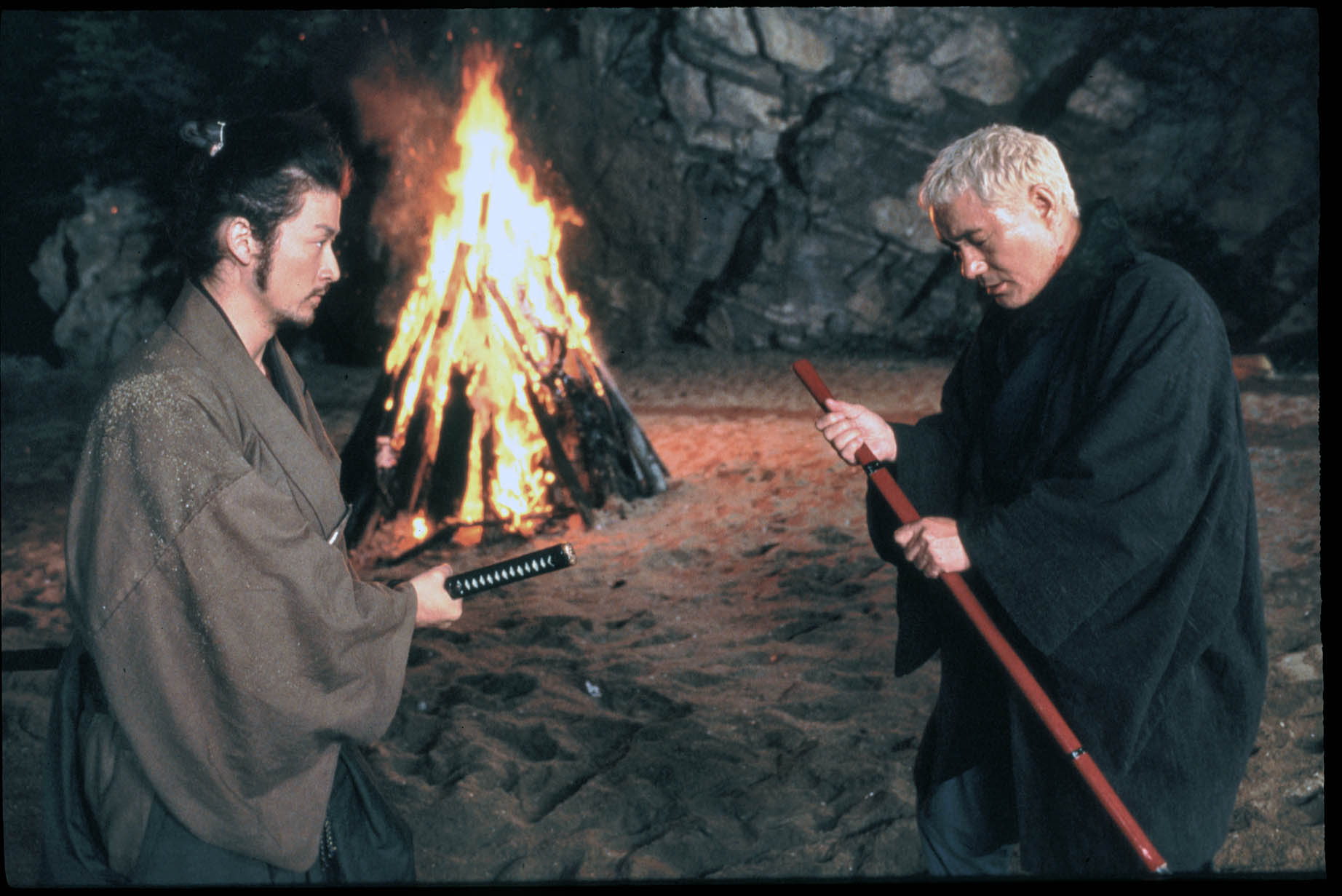
This film is Takeshi Kitano’s most celebrated and commercially successful film, netting $23.7 million in the Japanese box office and $31.1 million worldwide, mainly because of its wide release in the US that reached 55 theaters. Furthermore, Kitano won the Silver Lion for Best Director at the Venice Film Festival and plenty of awards from all over the world.
Zatoichi, a blind samurai and masseur, comes to the defense of villagers caught between the rivalries of two Yakuza gangs, punishing evil by killing a score of criminals with his hidden blade.
Kitano, who also plays the titular character, directed a tribute to the classical samurai genre. However, he injected it with his unique style that incorporates irony, cynicism, and sarcasm. The appearance of the hero, the hyperbolic bloodsheds, and the concept of the geisha siblings are some of the most characteristic examples.
The cast portrayed their characters in splendid fashion, with Kitano, Tadanobu Asano, Ittoku Kishibe and Akira Emoto being the most distinguished.
20. Spring, Summer, Fall, Winter…and Spring (Kim Ki Duk, 2003, S.Korea)
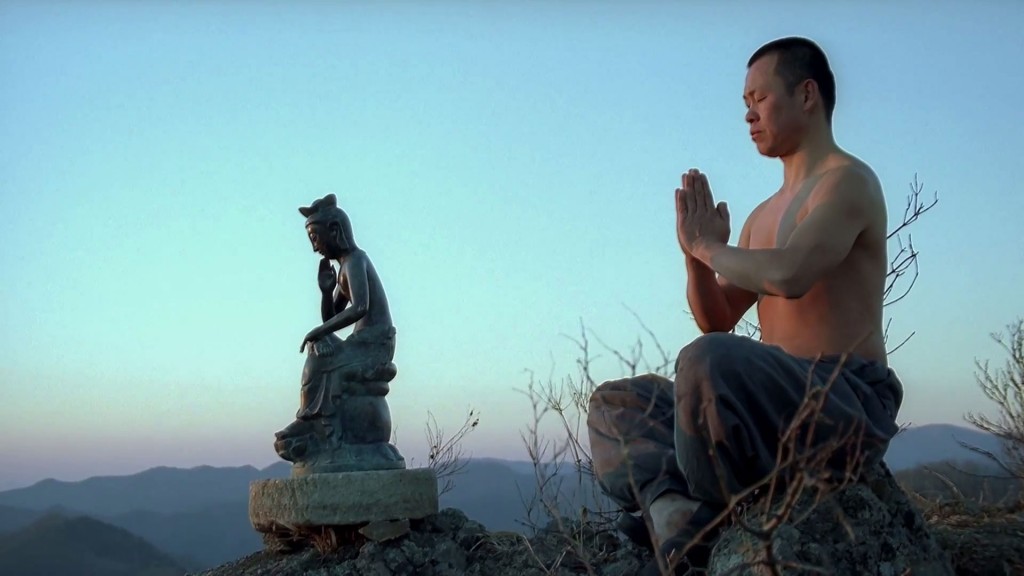
This film is the most widely known feature of the South Korean auteur and is currently one of seven Asian movies to be listed on the 250 top ranking movies on the Internet Movie Database.
An old monk lives with his little apprentice in a small and secluded floating temple. The unwavering teacher guides, perturbs, and punishes the young student when his immaturity and childlike naivety lead him towards violent acts against nature. As the seasons pass, the young pupil becomes an adult, while further embracing the different aspects of Buddhism.
However, when temptation appears in the form of a girl seeking solace in the temple, the youth appears very vulnerable, eventually becoming a prey to his own lust.
Through the life of the young student during the ever-changing seasons, Kim Ki-duk presents the Buddhist notion that physical and emotional violence can be tempered through meditation, which eventually leads to true enlightenment. Furthermore, through the lyricism of nature, Buddhist dogma, and the violence resulting from real life, he manages to communicate to the viewer a sense of peace and calmness.
Lastly, the film entails magnificent images of sceneries that transform through the seasons and the ages.
21. Kung Fu Hustle (Stephen Chow, 2004, Hong Kong)
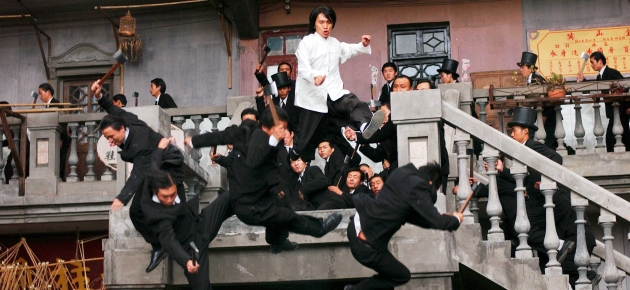
Stephen Chow’s production had huge success in both Hong Kong, where it became the highest-grossing film of its history, and the United States, where it was the highest-grossing foreign language film in the country in 2005.
In 1940s Shanghai, gangs fight for domination of the city and the one that eventually triumphs is the Axe Gang, which consists of gangsters in suits using axes as weapons. Due to violent incidents occurring all over Shanghai, the only places the rest of the citizens can live in peace and quiet are the slums.
One of those is called Pig Sty and is ruled by a married couple named Landlord and Landlady, respectively. One day, two minor crooks named Sing and Bowe appear in the slum and all hell breaks loose.
Chow used a number of retired Hong Kong action actors to portray a hilarious parody of the genre, which makes fun of most of the clichés of the genre, including techniques learned by secret manuals, martial arts masters with different styles, beggars-teachers of kung fu, and flying fighters.
The film incorporates slapstick aesthetics, with the veteran actors performing in a cartoonish fashion, actually making fun of the roles they had played in their career.
22. Nobody Knows (Hirokazu Koreeda, 2004, Japan)
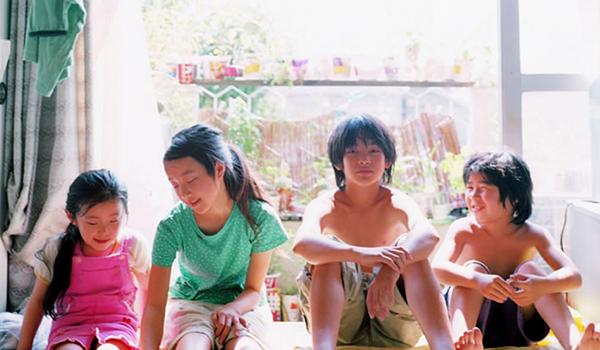
Inspired by a true 1988 incident known as the “affair of the four abandoned children of Sugamo”, “Nobody Knows” established Hirokazu Koreeda as a master of the contemporary Japanese family drama. Furthermore, it exemplified his skill in directing child actors, with the 14-year-old Yuya Yagira winning a number of awards, including the one for Best Actor from the Cannes Film Festival.
Four siblings from different fathers reside with their mother in a small apartment in Tokyo. According to her building proprietor, she appears to have only one son, Akira, the oldest of the four, while hiding the others in order to keep the rent at a minimum. At some point, she abandons them, leaving them only some money. Akira now has to take care of everyone, since the rest of the kids have to stay inside the house in fear of being noticed by the proprietor.
Koreeda directs a film that moves in the characteristic Japanese way of filmmaking, which includes slow pace and minimalism, realism, attention to detail, and very careful editing. His point of focus is evident and concerns the alienation of children in the environment of the megalopolis.
23. Ip Man (Wilson Yip, 2008, Hong Kong)
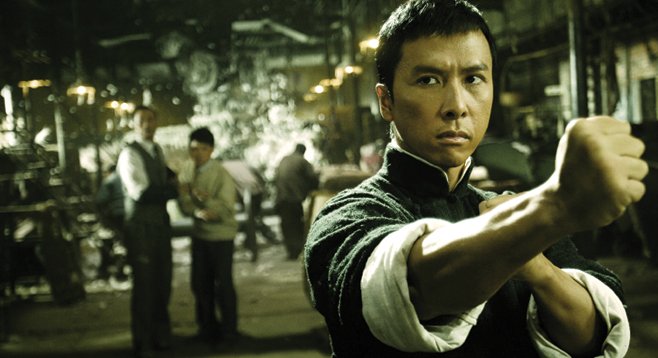
The interest regarding the titular character and Wing Chun, which eventually became international, began with this film.
The story takes place in Foshan, a city in China that was considered a center of martial arts. Ip Man is a modest aristocrat who enjoys the fame of being the strongest fighter, a fact proven in a number of battles. When an outsider named Jin Shao Zhao arrives in the city to challenge the martial arts masters, Ip Man seems to be the only one who can stop him.
Unfortunately for the people in Foshan, the Japanese invade China a bit later and the living conditions of people in Foshan deteriorate rapidly. Ip Man has now to face the hunger, the struggles of the residents who turn to him for protection, and a Japanese general who wants to challenge him in a fight.
With action choreographies by Sammo Hung, Tony Leung and Siu Hung, and with Donnie Yen in the protagonist role giving one of his best performances, the film quickly became an international sensation.
The story is not historically accurate, but the action compensates for every flaw anyone could find, with the two fights between Donnie Yen and Fan Siu Wong in the beginning, and Hiroyuki Ikeuchi in the end, being the most impressive.
24. I Saw the Devil (Kim Jee-woon, 2010, S.Korea)
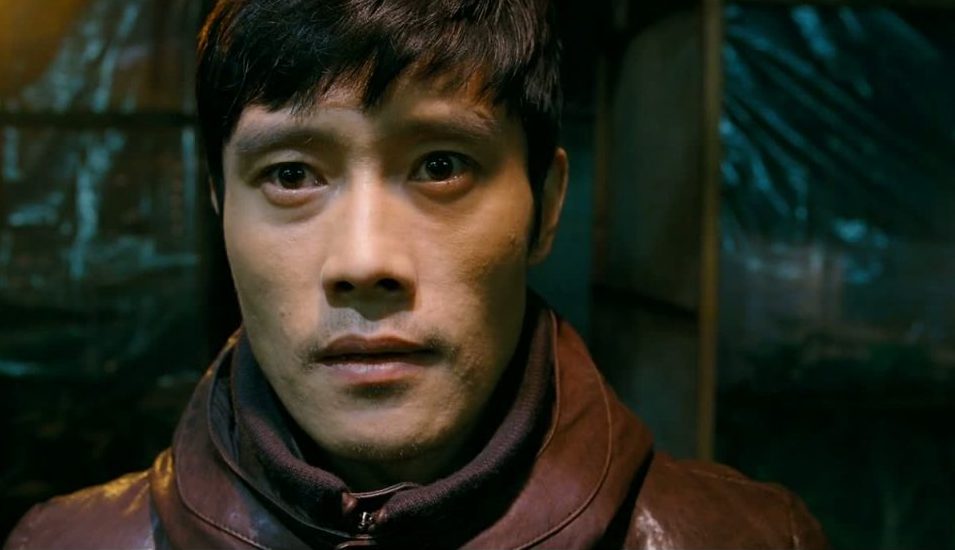
Kyung-chu, a sadistic murderer, assassinates special agent Soo-hyun’s fiance, Joo-yun. A few days later, the police discover parts of her dismembered body in a river. Jang, the police chief and father of the girl, gives Soo-hyun a list with suspects, and he proceeds in investigating the crime in order to exact revenge.
Kim Jee-woon presents a grotesque masterpiece, where revenge is the driving force of almost everything that occurs on screen. Initially the film looks like a battle between good and evil, but as the revenge procedure extends, the borders between the two stop being visible, thus resulting in the spectator doubting who the evil one actually is.
“I Saw the Devil” includes sublime direction and scriptwriting, great performances by the protagonists, artful cinematography and editing, and one of the most shocking endings ever to appear on film. It was also the one that functioned as a step stone for Kim Jee-woon’s and Lee Byung Hun’s later careers in Hollywood.
25. A Separation (Asghar Farhadi, 2011, Iran)
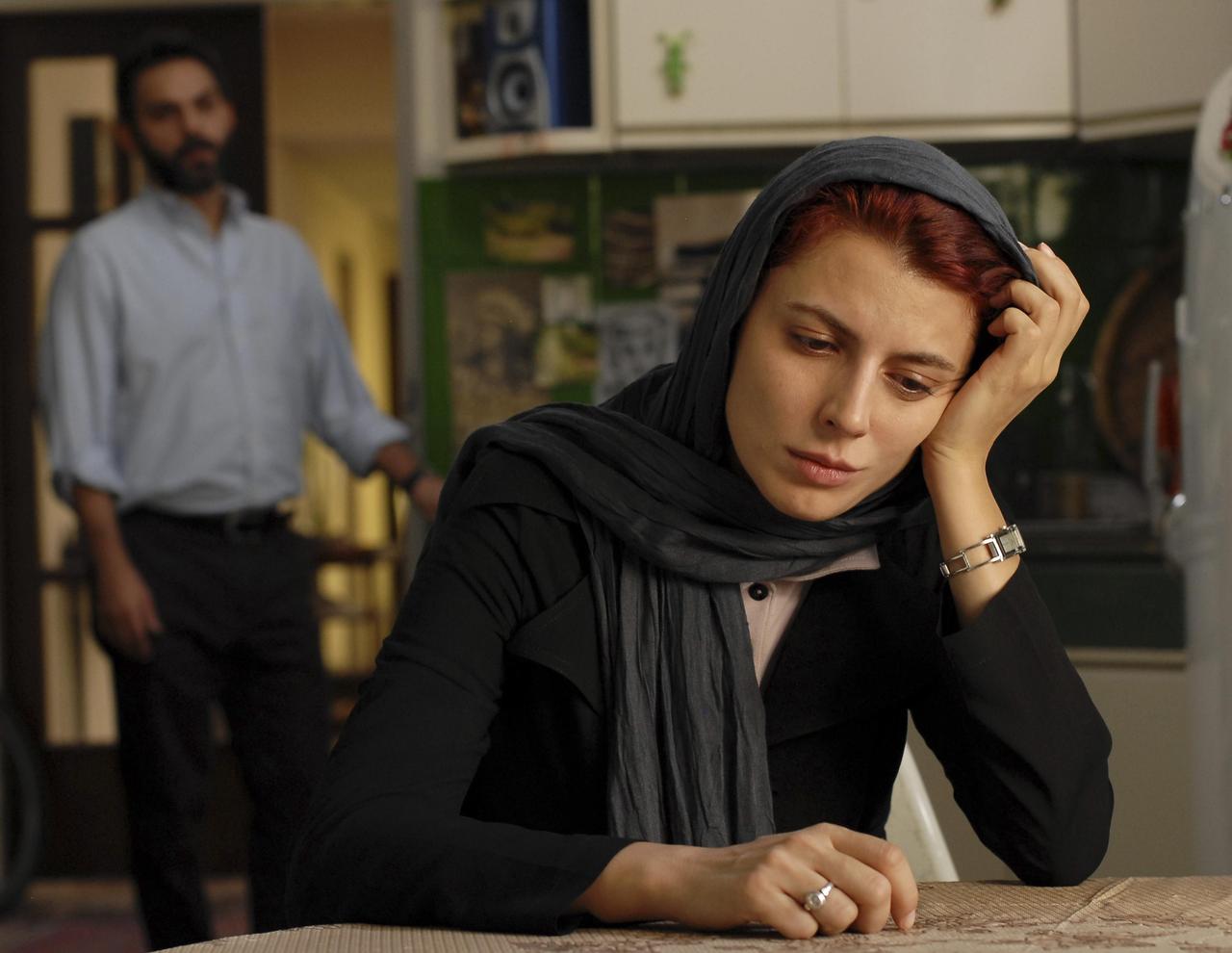
“A Separation” is one of the most internationally acclaimed films on the list, winning 76 awards from festivals around the world, including the Oscar and the Golden Globe for Best Foreign Language Film of the Year.
In order for her daughter, Termeh, to receive better education and to have a brighter future than her, Simin wants her family to move to the West. When Nader, her husband, strongly disagrees, she asks for a divorce and custody of their daughter. When the court turns down her petition, she leaves the family’s house and moves in with her parents.
Upon her absence, Nader has trouble caring for his father, who suffers from Alzheimer’s disease. Simin recommends he hire the religious Razeh for the task, a suggestion that gives the already complicated situation a terrible twist.
Asghar Farhadi directs a true masterpiece that tackles many social issues in the theocratic country of Iran, including honor, correctitude, touchiness, justice, and religion. His characters are all presented as prey to the norms society imposes on them, with Nader, portrayed magnificently by Peyman Moaadi, being the most tragic figure of all.
Author Bio: Panos Kotzathanasis is a film critic who focuses on the cinema of East Asia. He enjoys films from all genres, although he is a big fan of exploitation. You can follow him on Facebook or Twitter.